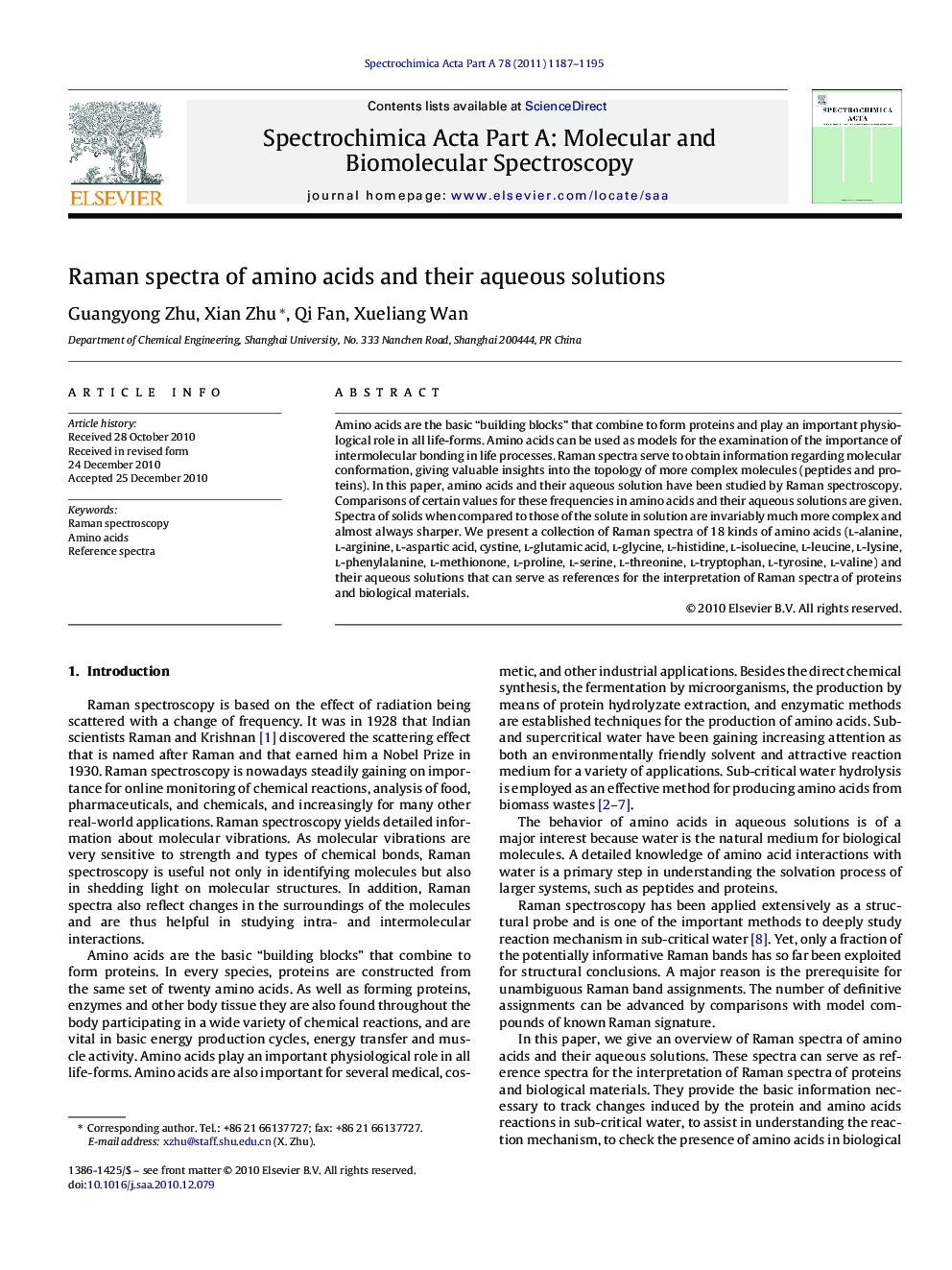| Article ID | Journal | Published Year | Pages | File Type |
|---|---|---|---|---|
| 1231974 | Spectrochimica Acta Part A: Molecular and Biomolecular Spectroscopy | 2011 | 9 Pages |
Amino acids are the basic “building blocks” that combine to form proteins and play an important physiological role in all life-forms. Amino acids can be used as models for the examination of the importance of intermolecular bonding in life processes. Raman spectra serve to obtain information regarding molecular conformation, giving valuable insights into the topology of more complex molecules (peptides and proteins). In this paper, amino acids and their aqueous solution have been studied by Raman spectroscopy. Comparisons of certain values for these frequencies in amino acids and their aqueous solutions are given. Spectra of solids when compared to those of the solute in solution are invariably much more complex and almost always sharper. We present a collection of Raman spectra of 18 kinds of amino acids (l-alanine, l-arginine, l-aspartic acid, cystine, l-glutamic acid, l-glycine, l-histidine, l-isoluecine, l-leucine, l-lysine, l-phenylalanine, l-methionone, l-proline, l-serine, l-threonine, l-tryptophan, l-tyrosine, l-valine) and their aqueous solutions that can serve as references for the interpretation of Raman spectra of proteins and biological materials.
Graphical abstractRaman spectra of amino acid and its aqueous solution are given, which can serve as reference spectra for the interpretation of Raman spectra of proteins and biological materials.Figure optionsDownload full-size imageDownload as PowerPoint slideResearch highlights▶ Raman spectra of 18 kinds of amino acids and collagen were studied. ▶ Raman bands were assigned. ▶ Spectra of solids are more complex and sharper than that of solution. ▶ They can serve as references for the interpretation of Raman spectra.
